Discover the Benefits of Ballet Exercises Done at a Barre NYT
Table of Contents
Introduction
Ballet exercises done at a barre NYT are a key part of ballet training that help dancers build strength, flexibility, and coordination. These exercises are typically performed at a barre, which provides support and stability, allowing dancers to focus on perfecting their movements. The barre acts as a helpful tool for beginners, while more experienced dancers use it to fine-tune their techniques. From the basic tendu to more complex movements, these exercises are essential for developing the skills needed to perform in ballet.
In addition to improving dance skills, ballet exercises done at a barre NYT have benefits that extend beyond the dance studio. They play a significant role in enhancing posture, balance, and overall body awareness. Whether you’re a dancer or an athlete, the controlled, precise movements of ballet help improve muscle tone, strength, and coordination. By performing these exercises regularly, dancers and athletes can experience better flexibility, injury prevention, and a more graceful range of motion, which can be applied to many other sports.
Ballet exercises at the barre also offer a foundation for various forms of physical training. While the primary goal is to enhance ballet performance, many athletes from different disciplines incorporate barre exercises into their training routine. These exercises focus on alignment, stability, and controlled movement, skills that are valuable in sports such as gymnastics, tennis, and even running. Ballet’s focus on technique and body awareness helps athletes prevent injuries and improve their overall athletic performance.
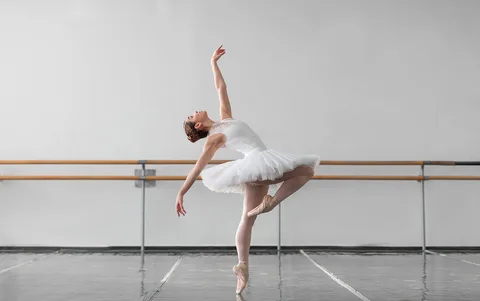
Introduction to Ballet Exercises Done at a Barre NYT
Ballet exercises done at a barre NYT are a key part of ballet training, whether you’re a beginner or an advanced dancer. These exercises are performed while holding onto a barre, a long horizontal bar usually mounted on the wall. The barre helps dancers maintain balance while they focus on improving strength, flexibility, and technique. Many people think of ballet as just a beautiful dance, but behind every graceful movement is a lot of hard work and practice.
When practicing ballet exercises at a barre, the main goal is to master the basic movements that form the foundation of ballet. These exercises allow you to develop muscle strength, especially in the legs and core, which are crucial for executing more advanced dance moves. For beginners, the barre serves as a supportive tool, but as you grow in skill, you’ll learn how to rely less on it while maintaining balance and control.
Ballet exercises done at a barre NYT help dancers improve posture as well. Keeping a straight back, engaging the core, and positioning the arms correctly are all vital elements of ballet. Through consistent practice, you learn to move your body with precision, which is important not only for ballet but also for other physical activities and even daily life. The discipline and focus needed in ballet help dancers develop body awareness, making it easier to perform even the most complex movements.
One of the best things about ballet exercises done at a barre NYT is that they offer a full-body workout. While the focus is often on the legs and feet, these exercises also help strengthen the arms, core, and back. A typical ballet routine involves a combination of stretches, pliés (bending of the knees), and tendus (extending the foot), all of which work to tone and stretch muscles. With every session, dancers improve not only their flexibility but also their muscle control and coordination.
Whether you dream of becoming a professional dancer or simply want to improve your fitness, ballet exercises done at a barre NYT are a great way to achieve your goals. They offer numerous benefits, from increasing flexibility and balance to building strength and endurance. With the right guidance and regular practice, you can enjoy all the advantages of ballet while experiencing the joy of dancing.
Why Ballet Exercises Done at a Barre NYT Are Important for Dancers
Ballet exercises done at a barre NYT are important for dancers because they provide a structured and safe environment to practice essential techniques. The barre acts as a support system, allowing dancers to focus on their movements without the risk of falling or losing balance. This is especially important when learning new movements or working on improving form. With the barre, dancers can perform exercises that challenge their strength and flexibility while maintaining control.
One of the main reasons ballet exercises done at a barre NYT are important is that they help dancers build the foundational strength needed for more advanced ballet movements. Many ballet steps require powerful muscles in the legs, feet, and core, and the exercises at the barre work to develop these muscles. For example, pliés and relevés strengthen the legs, while tendus and battements improve foot and ankle strength. By practicing at the barre, dancers can focus on strengthening these muscles without worrying about balance.
Ballet exercises done at a barre NYT also help dancers refine their posture. Ballet requires a straight back, lifted chest, and engaged core, which are not only important for good technique but also for preventing injuries. With the support of the barre, dancers can concentrate on proper alignment and body position. This leads to better posture overall, which can improve performance both in ballet and in other activities. Dancers learn to engage muscles they may not normally use in daily life, leading to improved muscle memory and better control.
In addition, ballet exercises done at a barre NYT enhance flexibility and range of motion. Many ballet movements, such as leg extensions and high kicks, require a significant amount of flexibility. Through regular practice at the barre, dancers work on stretching and lengthening their muscles, which improves flexibility over time. Flexibility is key for executing graceful and fluid movements in ballet, and it helps prevent injuries by keeping muscles and joints limber.
Finally, ballet exercises done at a barre NYT help dancers develop mental focus and discipline. Ballet is not just a physical practice; it requires mental concentration and dedication. While performing these exercises, dancers must pay close attention to every movement, ensuring proper technique and alignment. This level of focus helps dancers stay disciplined and committed to their training, which is essential for growth and improvement. Ballet exercises done at a barre NYT provide a balanced mix of physical and mental challenge that benefits dancers in every aspect of their practice.
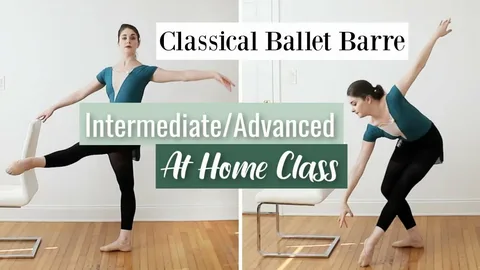
How Ballet Exercises Done at a Barre NYT Help Build Strength
Ballet exercises done at a barre NYT are a powerful way to build strength in various muscles, especially in the legs, feet, and core. These exercises often target smaller muscle groups that may not be engaged as much in other workouts. For example, movements like pliés and tendus involve controlled bending and extending of the legs, which activate the thigh muscles and help build strength in the legs. By doing these exercises repeatedly at the barre, dancers can improve their endurance and power in the lower body.
In addition to strengthening the legs, ballet exercises done at a barre NYT also help build strength in the feet and ankles. Many ballet movements require precise control of the feet, and the barre provides support while dancers practice extending, flexing, and pointing their feet. Exercises like relevés, which involve rising onto the toes, are excellent for building calf strength. As dancers work on these exercises, they strengthen the muscles in their feet and ankles, which improves balance and stability.
The core is another area where ballet exercises done at a barre NYT can help build strength. A strong core is essential for maintaining proper posture and executing many ballet movements with control. While performing barre exercises, dancers must engage their abdominal muscles to keep their torso upright and steady. Movements like grand battements and développé, which require lifting the legs, rely heavily on core strength. Over time, these exercises help develop a strong, stable core that supports overall movement and balance in ballet.
Furthermore, ballet exercises at the barre promote muscle coordination and balance, which are key for strength development. The slow, controlled movements in ballet engage multiple muscle groups at once, requiring them to work together. For example, while holding onto the barre and performing a plié, the legs, core, and even the arms must work in harmony to maintain balance and execute the movement correctly. This full-body coordination not only builds strength but also improves muscle memory, allowing dancers to perform more advanced movements with ease.
Finally, ballet exercises done at a barre NYT build muscular endurance. Since many of these exercises are performed repeatedly in a series, they help dancers build stamina and sustain strength over long periods. For example, holding a position like an arabesque or performing a series of pliés challenges the muscles to maintain their strength for an extended period. Over time, this endurance training helps dancers perform longer routines and more demanding movements without fatigue.
Flexibility and Posture Benefits of Ballet Exercises Done at a Barre NYT
Ballet exercises done at a barre NYT are known for improving flexibility, which is essential for executing many ballet movements gracefully. One of the main benefits of practicing at the barre is that it allows dancers to work on stretching their muscles in a controlled manner. Movements like tendus, arabesques, and développé help to lengthen the muscles in the legs and improve range of motion. By regularly performing these exercises, dancers can increase the flexibility of their legs, hips, and feet, which are vital for achieving high extensions and smooth transitions between movements.
The barre provides support while dancers stretch, allowing them to focus on lengthening their muscles without worrying about balance. For instance, a dancer can hold onto the barre while performing a slow and controlled stretch, ensuring that the muscles are being stretched properly. This support makes it easier to achieve deeper stretches, which helps increase flexibility over time. As flexibility improves, dancers can execute movements with greater ease and elegance, enhancing their overall performance.
In addition to flexibility, ballet exercises done at a barre NYT are also crucial for improving posture. Ballet places a strong emphasis on maintaining proper alignment throughout the body. The barre helps dancers learn to position their body correctly, from keeping their shoulders relaxed and their chest lifted to engaging the core. Exercises such as pliés and relevés help reinforce the concept of maintaining a straight back and keeping the pelvis aligned. These movements teach dancers to focus on body positioning, which helps improve their posture not only during ballet but in everyday life as well.
As dancers strengthen their muscles through barre exercises, they also develop the ability to hold and maintain proper posture for longer periods. Core engagement is a key aspect of ballet posture, and many barre exercises target the abdominal muscles to improve strength in this area. A strong core helps keep the body aligned and balanced, which is essential for performing ballet movements with precision. Over time, the posture benefits of ballet exercises done at a barre NYT carry over into other physical activities and contribute to a healthier, more confident body alignment.
Finally, the combination of improved flexibility and posture benefits dancers in a variety of ways. With increased flexibility, dancers can achieve more graceful and fluid movements. Improved posture also helps with breathing, balance, and overall body awareness. Together, these benefits create a solid foundation for any dancer, whether they are practicing ballet professionally or simply enjoying it as a form of exercise. Ballet exercises at the barre are a key part of achieving these goals, providing both physical and mental benefits that enhance overall dance performance.
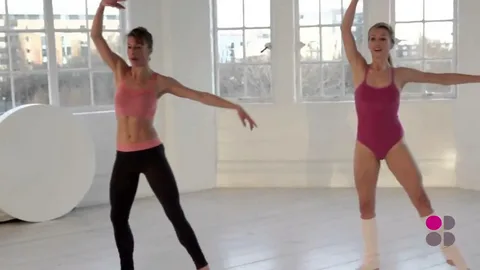
The Different Types of Ballet Exercises Done at a Barre NYT
Ballet exercises done at a barre NYT can be broken down into several types, each serving a specific purpose in improving strength, flexibility, and technique. One of the most basic and common exercises at the barre is the plié. A plié involves bending the knees while keeping the rest of the body aligned. This exercise is vital for building strength in the legs, particularly the quadriceps, hamstrings, and calves. Pliés also help to improve flexibility in the hips and ankles, making them a fundamental part of any ballet workout.
Another essential ballet exercise done at a barre NYT is the tendu. In a tendu, the dancer extends one leg outward, keeping the toes pointed and the body straight. This exercise helps to improve the strength and flexibility of the feet and legs. By practicing tendus, dancers can increase their range of motion and enhance their control over their movements. Tendus are often used as part of a warm-up routine to prepare the body for more intense exercises.
The relevé is another key ballet exercise done at a barre NYT, focusing on balance and calf strength. In a relevé, the dancer rises onto their toes, either with both feet or just one, and then lowers back down. This exercise helps to build strength in the calves and ankles while also improving balance. It is often included in ballet routines to help dancers develop control over their footwork and achieve better balance when performing on pointe.
One of the most challenging exercises at the barre is the battement dégagé, which involves extending one leg away from the body and then quickly returning it to the starting position. This movement improves leg strength, flexibility, and control, as it requires both precision and speed. Battement dégagé is often used to train the dancer’s ability to execute fast, sharp movements while maintaining good form. It is also a great exercise for strengthening the muscles of the legs and feet, which are essential for more advanced ballet techniques.
Lastly, grand battement is another common exercise at the barre that focuses on leg strength and flexibility. In this exercise, the dancer kicks one leg up to a high position while keeping the rest of the body stable. Grand battements help improve the dancer’s range of motion and are crucial for building the flexibility needed to perform high extensions and jumps. By practicing grand battements, dancers also work on their coordination and control, ensuring that they can perform complex movements with fluidity and grace.
The Best Ballet Exercises Done at a Barre NYT for Beginners
For beginners, ballet exercises done at a barre NYT offer a great way to build a strong foundation while learning essential techniques. One of the best starting exercises is the plié. Pliés help beginners get comfortable with bending their knees while maintaining proper alignment. This simple yet effective exercise strengthens the legs and prepares the body for more advanced movements. Beginners can practice pliés in different positions, such as demi-plié (a small bend) and grand plié (a deeper bend), to gradually increase flexibility and strength.
Another excellent exercise for beginners is the tendu. This movement involves extending one leg out while keeping the foot pointed and the body straight. Tendus are great for beginners because they help build strength and flexibility in the feet, legs, and hips. Additionally, tendus teach proper alignment and help develop control over the legs, which is essential for more complex ballet movements. Practicing tendus also improves muscle memory and helps beginners gain confidence in their technique.
For balance and coordination, the relevé is an essential ballet exercise done at a barre NYT for beginners. In a relevé, the dancer rises up onto the toes, focusing on controlled movement and balance. This exercise strengthens the calves and improves balance, which is vital for executing other ballet techniques. Beginners can start by practicing relevés with both feet on the ground before moving to single-leg relevés. Working at the barre provides stability, making it easier for beginners to master the movement without losing balance.
Rond de jambe is another beneficial exercise for beginners. This exercise involves drawing circles with one leg while keeping the foot on the floor. It helps increase flexibility in the hips and strengthens the legs. Rond de jambe is an excellent way for beginners to learn how to control the movement of the legs and improve the flow of their dance. Practicing this exercise regularly at the barre can also help beginners develop a sense of coordination, as the movement engages both the lower and upper body.
Finally, dégagé is a great exercise to include in a beginner’s routine. In dégagé, the dancer extends one leg outward and then brings it back. This exercise improves leg strength and flexibility, especially in the feet and ankles. It also helps beginners practice precision and control, which are important for every ballet movement. By practicing dégagé at the barre, beginners can work on developing their technique and gaining confidence in their ability to perform more complex ballet exercises later on.
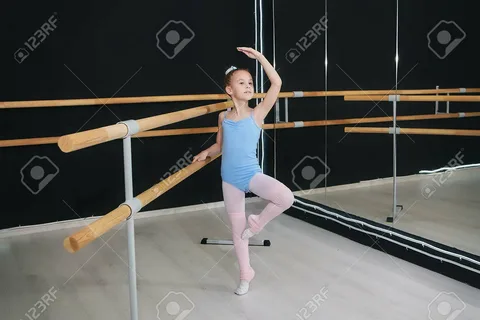
Improving Balance with Ballet Exercises Done at a Barre NYT
One of the key benefits of ballet exercises done at a barre NYT is improving balance. Many ballet movements require dancers to hold positions or perform steps while maintaining steady control over their bodies. The barre provides essential support, allowing dancers to focus on their posture and alignment without worrying about falling. One of the best exercises to improve balance is the relevé. In a relevé, the dancer rises onto their toes, engaging the calves and core to maintain stability. Practicing this movement helps build the balance necessary for more advanced ballet techniques, and it also strengthens the muscles used to stay balanced on one foot.
Another ballet exercise done at a barre NYT that helps improve balance is the arabesque. This exercise involves balancing on one leg while extending the other leg behind the body. By holding onto the barre for support, dancers can focus on engaging their core and maintaining their posture. Over time, practicing arabesques builds strength and stability in the supporting leg, which improves balance. The more a dancer practices balancing in this position, the easier it becomes to maintain control during complex movements and routines.
Passé, a simple but effective ballet exercise, also plays a crucial role in improving balance. In a passé, one leg is lifted and bent so that the foot is positioned near the knee of the standing leg. Holding this position, even for a few seconds, requires engaging the core and maintaining a steady upper body. As dancers practice passé at the barre, they develop better control and coordination, which ultimately improves balance. It also helps to build awareness of body alignment, which is key to maintaining stability during dynamic ballet movements.
The plié is another ballet exercise that enhances balance. A plié involves bending the knees while keeping the body upright. By practicing pliés in various positions, dancers learn how to distribute their weight evenly between both legs, which is important for maintaining balance during other movements. Pliés also help develop muscle strength in the legs and core, which are essential for supporting the body during more complex ballet steps. This exercise teaches dancers to stay grounded while keeping their upper body steady, thus improving overall balance.
Lastly, the tendu is a ballet exercise done at a barre NYT that can significantly improve balance. While performing a tendu, one leg extends out while the other leg remains in position. This exercise not only builds strength in the legs and feet but also requires balance as the body works to keep stable while the leg extends. Practicing tendus repeatedly at the barre helps dancers strengthen their sense of control, improve their posture, and develop a better understanding of how to balance their body weight during different movements.
Advanced Ballet Exercises Done at a Barre NYT: A Challenge for Experienced Dancers
For experienced dancers, ballet exercises done at a barre NYT become more challenging as they focus on increasing strength, flexibility, and precision. One of the most advanced exercises is the grand battement, where the dancer lifts one leg to a high position and then brings it back down. This exercise requires both speed and control, as the dancer needs to execute the movement sharply while maintaining proper alignment. It’s a powerful way to strengthen the legs and improve flexibility, especially in the hips and thighs. Advanced dancers often use grand battement to improve their high kicks and develop greater control over fast, dynamic movements.
Another advanced ballet exercise done at a barre NYT is the fouetté. This exercise involves rotating the body while keeping one leg extended, and it requires significant coordination and balance. Fouetté turns challenge dancers to maintain their posture and alignment while spinning, using the barre for support to focus on precision. This exercise helps develop strength in the core and legs while testing the dancer’s ability to control rapid movement. For experienced dancers, fouetté is a great way to improve turning ability and increase the fluidity of movement during pirouettes and other spins.
Developpé is another advanced exercise that takes precision and strength. In a développé, the dancer slowly lifts one leg through passé and extends it outward, holding the position before bringing the leg back down. This exercise challenges dancers to control the movement while holding the leg at various heights. As the leg extends, it requires flexibility in the hips and strength in the thighs and core. The développé is often used by experienced dancers to improve their balance and control over extensions, which are essential for executing graceful, high-level ballet performances.
Piqué turns are also an advanced exercise done at a barre NYT, involving the dancer stepping onto one leg while the other leg extends into a pointed position. These turns require precision and excellent balance as the dancer spins from one foot to the other, using the barre for support and stability. Piqué turns help develop both the dancer’s turning ability and their sense of coordination. Mastering this advanced exercise requires constant practice and control, especially when moving at a faster pace or in combination with other ballet steps.
Finally, penché is an advanced ballet exercise done at a barre NYT that focuses on balance, flexibility, and strength. In a penché, the dancer lifts one leg behind them while tilting the upper body forward, creating a horizontal line from the extended leg to the head. This exercise requires a great deal of flexibility in the hips and back, as well as strength in the core and legs to hold the position. Penché is a challenging exercise for experienced dancers because it involves a combination of strength, balance, and flexibility, and it is often used to improve control in advanced movements.
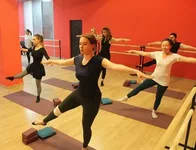
How to Perform Ballet Exercises Done at a Barre NYT Correctly
Performing ballet exercises done at a barre NYT correctly is essential for building strength, flexibility, and technique. The first step is to focus on posture. Keeping your spine straight and your shoulders relaxed is crucial for every ballet movement. Before starting any exercise, ensure your feet are positioned properly. For most ballet exercises at the barre, your feet should be in first position, where your heels are together and your toes are pointed outward, or in parallel, where your feet are facing forward. Maintaining correct alignment will not only make the movements more graceful but also prevent injuries as you move through each exercise.
Another important aspect of performing ballet exercises correctly is engaging the core. Ballet requires a lot of control and stability, and your core muscles play a major role in supporting your body during movements. Whether you are doing a plié, tendu, or relevé, you should always think about tightening your abdominal muscles. This will help you stay balanced, especially when performing movements on one leg. Engaging your core also allows you to maintain a solid posture, ensuring that your upper body remains steady while your legs are in motion.
The placement of your hands and arms are also key to performing ballet exercises at the barre correctly. In most exercises, your arms should be positioned in a rounded shape, similar to a “ball” or port de bras. This position helps create an elegant line from your shoulders down to your hands. Pay attention to the placement of your arms during movements like the plié or tendu, as incorrect arm positioning can disrupt your balance or alignment. Keep your arms soft but controlled, and avoid clenching your fists or tensing up.
As you begin an exercise, it’s important to focus on control and precision. Ballet is all about smooth, controlled movements. For example, when performing a tendu, slowly extend the foot and keep it pointed without rushing the movement. This ensures that the exercise is performed with accuracy and grace. Avoid the temptation to speed through the exercises, as this can lead to poor technique. Practice each movement slowly at first, then gradually increase your speed as you gain more confidence and control.
Finally, always remember to breathe throughout the exercises. Holding your breath can cause tension in your muscles, which can make movements feel stiff or uncoordinated. Make sure to breathe steadily and naturally as you perform each exercise. Inhale as you prepare for the movement and exhale as you complete it. Breathing deeply and consistently helps you maintain fluidity in your movements and keeps your body relaxed and energized.
Ballet Exercises Done at a Barre NYT for Better Coordination
Ballet exercises done at a barre NYT are perfect for improving coordination, which is crucial for every dancer. One of the best exercises to improve coordination is the tendu. In a tendu, the dancer extends one leg out while keeping the foot pointed, then brings it back to the starting position. This exercise requires coordination between the leg, foot, and core muscles, as the dancer needs to control the movement of the leg while maintaining proper alignment. Practicing tendus regularly at the barre helps improve the ability to move different parts of the body in sync, making the body work together as a coordinated unit.
Another excellent ballet exercise done at a barre NYT for better coordination is the dégagé. In a dégagé, the dancer lifts one leg off the floor and extends it outward, typically to a height just above the ground. The leg is then returned to the starting position. This exercise trains the dancer to move the leg smoothly while keeping the rest of the body steady. Dancers must focus on controlling the movement of the leg while ensuring their arms and torso remain still. The repetitive practice of this movement improves coordination between the lower body and upper body, helping the dancer develop more fluidity in their movements.
Plié is another ballet exercise that greatly enhances coordination. In a plié, the dancer bends the knees while keeping the upper body upright. It requires coordination between the legs, core, and arms as the dancer lowers and rises in the position. Practicing pliés at the barre teaches the dancer to control their descent and rise, using the legs to bend smoothly and the core to maintain balance. As the dancer becomes more skilled, they can integrate the plié with other movements, further developing coordination between different parts of the body.
Grand battement is a more advanced ballet exercise that also improves coordination. In a grand battement, the dancer swings one leg high into the air, keeping it straight and controlled. The leg is then brought back down smoothly. This exercise works on timing and precision, as the dancer must coordinate the powerful leg movement with controlled body positioning. The grand battement helps develop better control over leg movements and improves the ability to transition from one position to the next without losing balance or rhythm.
Finally, balancé is a fun and challenging exercise that helps improve coordination. This movement involves shifting weight from one foot to another while performing a small, flowing step from side to side. The movement requires precise foot placement, arm control, and quick adjustments between different body positions. By practicing balancé at the barre, dancers can improve their coordination between the lower body and upper body, making their movements more fluid and harmonious.
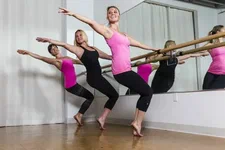
How Ballet Exercises Done at a Barre NYT Can Help with Other Sports
Ballet exercises done at a barre NYT offer benefits that go beyond the dance studio. One of the key advantages is how they improve balance and stability, which are essential in nearly every sport. Ballet movements like pliés and relevés teach the body to find balance while performing dynamic movements. These exercises strengthen the core and leg muscles, which help athletes maintain stability during quick changes of direction, whether in running, soccer, or tennis. A dancer’s ability to stay grounded while moving quickly translates to improved performance in other sports that require fast footwork and sudden movements.
Additionally, ballet exercises enhance flexibility, which is beneficial in sports such as gymnastics, swimming, and martial arts. Many ballet exercises focus on stretching the muscles and increasing joint mobility, which helps prevent injuries. For example, exercises like tendus and battements work on lengthening the muscles of the legs, which helps athletes achieve greater flexibility in their movements. Improved flexibility allows for a wider range of motion, making athletes more agile and reducing the risk of muscle strains or sprains in high-intensity sports.
Another area where ballet exercises done at a barre NYT can benefit athletes is strength and endurance. Ballet emphasizes controlled movements that require sustained effort, especially in exercises like relevés, where dancers rise onto the balls of their feet and hold the position. This strength-building movement helps athletes develop powerful calves, ankles, and thighs, improving their ability to perform explosive actions, such as sprinting or jumping. Ballet exercises also build endurance by focusing on maintaining muscle control over long periods of time, which is essential in sports like basketball or volleyball, where players need to be on their feet for extended periods.
Coordination is another skill that ballet helps develop, and it is crucial in sports like basketball, hockey, and football. Ballet exercises require precise control over body movements, helping athletes train their bodies to move in sync. For instance, exercises like grand battements or dégagés demand that the dancer moves one part of the body while keeping the rest of the body stable. This type of coordination, developed through consistent practice at the barre, improves an athlete’s ability to execute complex movements, such as dribbling a basketball or making accurate passes in football.
Lastly, posture and body awareness are improved through ballet exercises done at a barre NYT. Ballet teaches dancers how to hold their bodies in an upright, strong position, which transfers to better posture in all sports. Proper posture helps athletes perform better by maximizing their energy and efficiency. In sports like tennis or golf, where body alignment is key to powerful strokes, ballet exercises can strengthen posture and improve the execution of each move. This body awareness gained from ballet also aids athletes in understanding their own movements and preventing injuries from improper technique.
The Role of Ballet Exercises Done at a Barre NYT in Injury Prevention
Ballet exercises done at a barre NYT play an important role in injury prevention for dancers and athletes alike. One of the key benefits of ballet exercises is the way they promote muscle strength and flexibility. Many ballet movements, like pliés and tendus, require a full range of motion, which helps to strengthen the muscles and joints. The strengthening of these muscles, especially in the legs, feet, and core, helps to stabilize the body and protect against injuries. For example, strong muscles in the lower body can help prevent sprains and strains in activities that involve sudden, high-impact movements, such as running or jumping.
Another way ballet exercises at the barre contribute to injury prevention is by improving balance and proprioception. Ballet requires dancers to develop excellent body awareness, or proprioception, which is the sense of knowing where your body is in space. This awareness helps prevent falls and reduces the risk of injuries in both ballet and other activities. By practicing balance-focused exercises like relevés and développé at the barre, dancers and athletes enhance their ability to control their movements. This improved balance helps them avoid accidents and mishaps in other sports or daily activities, particularly when changing direction quickly.
Ballet exercises also help with joint stability, particularly in the ankles and knees. Many ballet exercises, such as pliés and arabesques, require precise movements that engage the smaller stabilizing muscles around the joints. These exercises build joint strength, allowing for better control and reducing the likelihood of overuse injuries. For example, strong ankle joints can help prevent conditions like tendonitis or sprained ankles in sports such as soccer or basketball, where footwork is critical. The focus on alignment in ballet exercises ensures that the body is positioned correctly, which reduces unnecessary strain on the joints and helps prevent injury.
In addition, ballet exercises done at a barre NYT promote muscle endurance. Dancers often hold positions for longer periods, such as in relevé or arabesque, which builds endurance in the muscles. This endurance training allows the muscles to better withstand the demands of physical activity, which can be crucial for preventing fatigue-related injuries. For example, in sports like tennis or swimming, athletes who have better muscle endurance are less likely to experience muscle fatigue, which can lead to poor form and increased injury risk. Ballet exercises teach the body to work efficiently for longer periods of time without overexertion.
Lastly, the low-impact nature of ballet exercises makes them an excellent way to prevent injury. Unlike many high-impact sports or exercises that place heavy stress on the joints, ballet offers a more controlled and graceful way to strengthen muscles and improve flexibility. For example, movements like tendus and dégagés, where the foot slides along the floor, place minimal impact on the joints but still provide significant benefits. This makes ballet exercises ideal for people looking to stay active while minimizing the risk of injury, especially those recovering from previous injuries or those looking to cross-train for other sports.
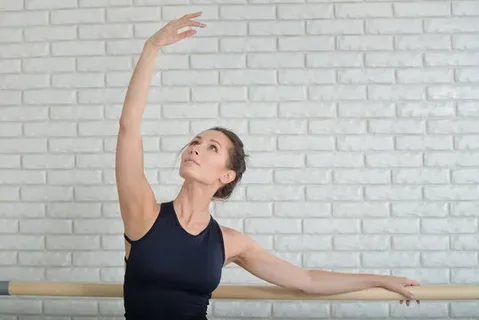
Conclusion
In conclusion, ballet exercises done at a barre NYT are not just for dancers—they offer many benefits for everyone! These exercises help improve strength, flexibility, balance, and coordination. Whether you’re a dancer, an athlete, or someone who just loves to stay active, practicing ballet at the barre can make your body stronger and more flexible, which helps prevent injuries. The slow, controlled movements in ballet are great for keeping your body in top shape and improving your overall fitness.
So, if you want to get better at other sports, stay injury-free, or just feel stronger and more balanced, give ballet exercises a try! You don’t have to be a professional dancer to enjoy the benefits of ballet. The barre is a great tool for improving many aspects of your physical health. Whether you’re a beginner or experienced, ballet exercises done at a barre NYT can be a fun and effective way to take care of your body and boost your fitness.
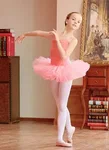

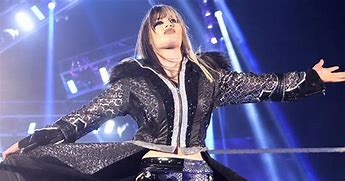











Post Comment